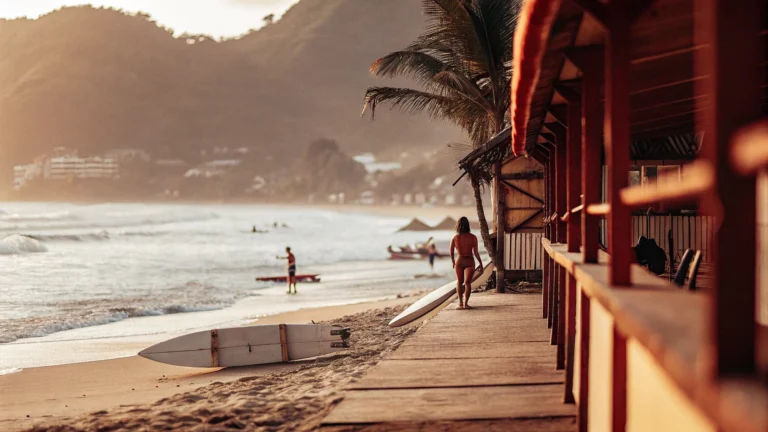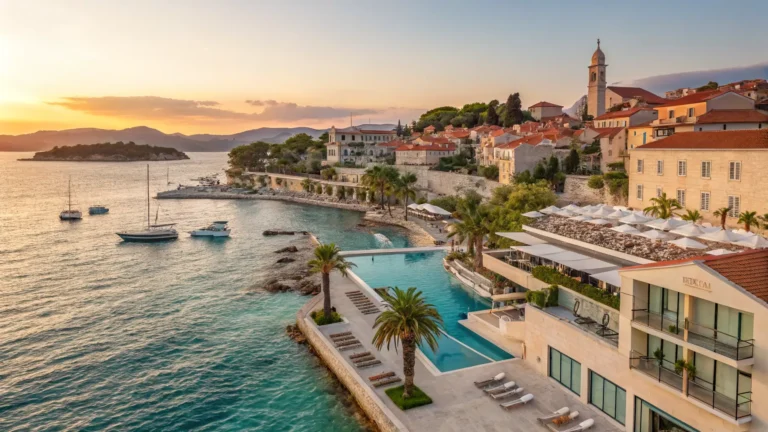Saint Tropez 8 Local Secrets for an Epic Vacation
So there I was, standing in line for 20 minutes just to buy an overpriced sandwich in Saint Tropez, watching cruise ship passengers elbow each other for photos at the same three spots. My girlfriend Sarah was getting cranky, the kids were whining about the crowds, and frankly? I was starting to think we’d made a huge mistake choosing this place for our family vacation.
Then this old guy behind me in line – Jacques, turned out – overheard me complaining in broken French about the tourist madness. He chuckled and said in perfect English, “You’re doing it all wrong, my friend. Come back here at 6 AM tomorrow, and I’ll show you the Saint Tropez my grandfather knew.”
That conversation in July 2018 changed everything. Jacques wasn’t just being polite – he actually met me the next morning and spent the entire day showing me places that felt like stepping into a different world. Same town, completely different experience.
Over the next few years, I kept coming back, building friendships with locals who shared their family secrets. What I discovered was incredible: Saint Tropez has this whole parallel universe that exists right alongside the tourist circus, but you’d never find it on your own.
Here are the 8 secrets that turned Saint Tropez from my biggest travel disappointment into one of my absolute favorite places on earth.
The Beach Where French Families Actually Go Swimming
Forget everything you’ve heard about the famous beaches. While tourists pack like sardines onto Pampelonne Beach paying €25 for a lousy beach chair, locals swim at Plage des Graniers – and most visitors walk right past it without a second glance.
Jacques took me there on that first morning, and I couldn’t believe what I was seeing. Maybe 15 people total, kids building sandcastles while their parents read books under umbrellas they brought from home. You could see fish swimming around your feet because the water was so clear.
Getting there takes some local knowledge. From the main harbor, walk past the luxury yacht marina (don’t stop for photos yet – there’s better stuff coming). Keep going until you see a faded yellow building with “Capitainerie” painted on the side. The beach entrance is the unmarked path right next to it.
Why locals love this spot:
- No beach clubs charging ridiculous fees
- Families have been coming here for three generations
- Protected cove means calm water for kids
- Local food truck (Chez Bruno) serves amazing socca and cold rosé
The only “downside”? You need to bring your own shade and snacks. But that’s exactly why it stays peaceful while other beaches turn into chaos.
Where Real Fishermen Sell Their Daily Catch
Most guidebooks mention the regular morning market at Place des Lices, but they completely miss the fish auction that happens before sunrise at the working port. This isn’t some cute tourist attraction – it’s where local restaurant owners compete for the best seafood that came in overnight.
I stumbled onto this scene by accident during my second visit. Couldn’t sleep (too much local wine the night before), so I wandered down to the harbor around 5:30 AM expecting to find peace and quiet. Instead, I discovered this amazing world of fishermen sorting their catch under floodlights while buyers examined everything with intense focus.
Here’s what you need to know:
- Happens Monday through Friday, roughly 5:45-7:15 AM
- Bring exact change in euros – no cards accepted
- Ask for “Capitaine” – he speaks decent English and loves teaching tourists
- Best deals: whatever fish are most abundant that day
The prices are absolutely nuts compared to restaurants. I bought enough fresh sea bream and langoustines for a dinner party of eight people, spent €18 total. Same meal at a harbor restaurant would’ve cost €200 easy.
Pro tip from Capitaine: Bring a small cooler with ice if you’re staying somewhere with a kitchen. The fish stays fresh for hours, and cooking it yourself becomes part of the adventure.
Secret Wine Tastings That Don’t Show Up Online
Everyone knows about the famous vineyard tours with their fancy buses and €40 tasting fees. But the real wine magic happens at tiny family operations that locals keep quiet because, honestly, they don’t want crowds showing up.
My breakthrough came through Marie, a woman I met at the local bakery who mentioned her brother-in-law makes “the best rosé in Provence” but doesn’t advertise because he’s too busy farming to deal with tour groups. She offered to introduce me if I was genuinely interested in learning about winemaking.
That introduction led to an afternoon at Domaine des Trois Chênes with Vincent, whose family has been making wine on the same 12 acres since 1923. No tour buses, no gift shop, just Vincent sharing his passion in broken English while his wife brought out cheese and homemade bread.
What makes these visits special:
- You’re tasting wine from barrels that aren’t even bottled yet
- Stories about how the region has changed over decades
- Opportunity to buy wine that never makes it to stores
- Personal connections that make every sip meaningful
The trick is mentioning you heard about them from a local friend (use Marie’s name if you want). Most of these small producers speak some English, and they’re incredibly generous with their time if they sense genuine interest rather than tourist box-checking.
The Shopping Street Tourists Never Discover
While everyone fights through crowds on the main shopping areas, locals buy their pottery, textiles, and artwork on Rue Gambetta – a quiet street that runs parallel to all the tourist madness but feels like a different century.
I found this street by following an elderly woman carrying the most beautiful ceramic bowl I’d ever seen. She led me straight to Henri’s workshop, where this 82-year-old potter still makes everything by hand using techniques his great-grandfather taught him.
Hidden shops worth finding:
- Atelier Henri – pottery that local families have been buying for 60 years
- Tissu & Traditions – fabrics hand-printed with patterns from the 1800s
- Genuine soap produced from regional olive oil is called Savons de Marseille Authentiques.
- Bijouterie Maritime – jewelry crafted from shells and sea glass
The prices are fair (think €20-50 for most items), and every shop owner knows the others. Henri introduced me to the fabric lady next door, who showed me patterns that appear in paintings from the 1920s. It felt like discovering a secret neighborhood that time forgot.
Here’s something nobody tells you: if you buy something from one shop and mention you’re visiting others on the street, they’ll often wrap your purchase nicely and let you pick it up later so you don’t have to carry bags around.
The Family Restaurant That’s Never Empty (But Never Crowded)
All those restaurants with perfect harbor views and €35 entrees? Locals eat at Le Petit Navire, tucked away on a side street where the only sign is a small chalkboard listing the day’s specials in handwritten French.
Finding this place was pure luck. Sarah wanted authentic bouillabaisse, and after striking out at three touristy places (€45 per person, mediocre quality), I asked our Airbnb host for advice. She looked surprised and said, “Oh, you want the real thing? Go see Madame Dupont.”
Madame Dupont, turns out, has been running Le Petit Navire with her daughter for 23 years. The bouillabaisse recipe came from her grandmother, who learned it from fishermen’s wives in the 1940s. The difference was incredible – complex, rich, obviously made with fish that came off boats that morning.
What makes this place magical:
- Menu changes based on what’s fresh at the morning fish auction
- Three-course meals for €25-30 per person
- Wine list featuring local producers tourists never hear about
- Atmosphere that feels like eating at a friend’s house
The daughter, Sylvie, speaks excellent English and loves explaining how each dish connects to local history. She’s also incredibly patient with kids – brought coloring books for ours without being asked.
The Hiking Trail That Locals Use for Morning Exercise
Most tourists think Saint Tropez is just beaches and shopping, but there’s this incredible coastal trail that offers better views than any restaurant terrace – and costs absolutely nothing.
Jacques mentioned this trail during our first meeting, calling it “the path to perspective.” Starts behind the old cemetery (not creepy, just quiet), follows the coastline for about 90 minutes, and ends at a viewpoint where you can see the entire French Riviera spread out below.
Trail highlights:
- Sunrise views that’ll make you forget Instagram exists
- Wild herbs growing everywhere (locals pick them for cooking)
- Secluded coves where you might spot dolphins
- Benches placed at perfect photo spots by the town decades ago
The walk isn’t difficult, but bring water and wear decent shoes – some sections cross rocky areas. Early morning is best for cooler temperatures and softer light, plus you’ll meet locals doing their daily exercise routine.
Actually, here’s something cool: about 45 minutes in, there’s a small stone shelter where hikers leave books in different languages. Take one, leave one. I found a worn copy of “A Year in Provence” that somebody had covered with handwritten notes about their own experiences in the region.
How Locals Actually Get Around (And Save Money)
Taxis cost a fortune, parking is impossible, and rental cars spend more time stuck in traffic than moving. But Saint Tropez has this local bus system that most tourists never discover because it’s not marketed to visitors.
I learned about “Les Navettes” from watching where locals went when they needed to get somewhere. These small buses run every 15-20 minutes between all the important spots, cost €1.50 per ride, and connect to regional routes that reach neighboring villages.
Transportation secrets:
- Day passes cost €5 and pay for themselves after 4 rides
- Drivers often speak English and give impromptu local advice
- Evening service runs until midnight during summer
- Connects to buses serving Ramatuelle, Gassin, and the wine country
The best part? Riding with locals leads to conversations. That’s how I met Philippe, a retired teacher who spent an entire bus ride telling me stories about Saint Tropez in the 1970s. The next weekend, he invited my family to his grandson’s birthday celebration.
Local Festivals That Happen Off the Tourist Calendar
Saint Tropez has this whole calendar of celebrations that happen year-round, but you’ll never find them promoted in hotels or tourist offices because they’re community events, not tourist attractions.
My first local festival was completely accidental. We arrived in early May and found streets blocked off for something called “Les Bravades” – a traditional celebration dating back to 1558 that involves colorful processions, musket firing, and community feasts that last until dawn.
Celebrations worth planning around:
- Fête de la Saint-Pierre (late June) – blessing of fishing boats followed by harbor feast
- Nuit des Arts (August) – local artists open studios, free wine and cheese
- Family picnics and the celebration of the grape harvest are part of the September Fête des Vendanges.
- Marché de Noël Authentique (December) – Christmas market run by local families
These events offer glimpses into the Saint Tropez that exists beyond tourism. Families who’ve lived here for generations, traditions that connect the present to centuries of history, and a sense of belonging that makes you feel like a temporary local rather than a passing visitor.
Making It All Work: Timing and Planning
After four visits spread across different seasons, I’ve figured out the rhythm that makes these local experiences work best.
Ideal timing for authentic experiences:
- Late May through mid-June – perfect weather, locals relaxed before summer chaos
- September into early October – harvest season, warm ocean, genuine festival atmosphere
- March and April – cooler but beautiful, much cheaper, very local feel
Budget-wise, following these local secrets costs about half what typical tourist activities charge. A perfect day hitting the hidden beach, fish market, local restaurant, and hiking trail runs €30-40 per person versus €80-100 for equivalent tourist experiences.
The language thing is manageable but important. Every local I met appreciated attempts to speak French, even badly. Say “Bonjour,” “S’il vous plaît,” “Merci,” “Excusez-moi” at the very least. Download Google Translate, but don’t be afraid to use gestures and smiles – warmth transcends language barriers.
Your Real Saint Tropez Adventure Starts Here
Looking back at that first frustrating morning in 2018, I realize how close I came to writing off Saint Tropez as an overpriced tourist trap. If Jacques hadn’t overheard my complaints and taken pity on a confused American family, I would’ve missed discovering one of the most authentic travel experiences of my life.
These eight secrets aren’t just alternative activities – they’re doorways into a community that welcomes curious visitors but doesn’t depend on tourism for its identity. Each discovery led to conversations, friendships, and understanding that generic guidebook experiences never could have provided.
The real Saint Tropez is still there, running parallel to the tourist circus but operating on completely different principles. You just need to know where to look and be willing to trust locals who want to share their home rather than sell it to you.
Start with one secret during your visit. Wake up early for that fish market. Follow an unmarked trail. Ask questions. Be genuinely curious about the stories behind the places you discover.
You might just find that the best travel happens when you stop trying to check boxes and start building connections with people who call these beautiful places home.
Have you discovered hidden gems during your travels that locals showed you? What’s the best advice you’ve gotten from someone who actually lives in the place you were visiting? Share your stories in the comments – I love hearing about those magical moments when travel becomes real connection.




